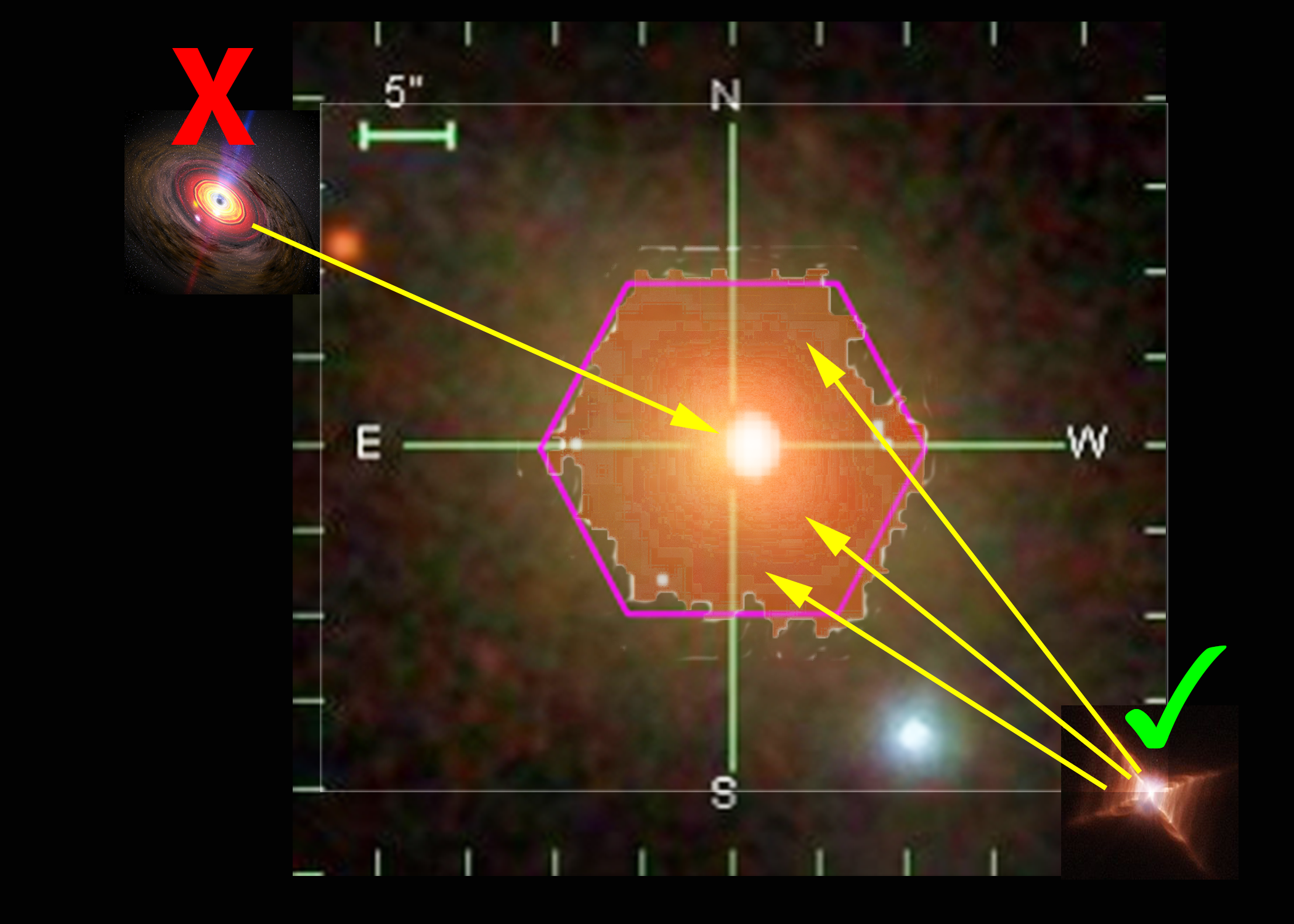You might think that astronomers could easily tell the difference between a black hole and a white dwarf – but nature can be deceptive.
Astronomers from the Sloan Digital Sky Survey (SDSS) this morning announced the results of a new study that reveals the true origin of puzzling light from nearby galaxies. Results were presented at the 227th meeting of the American Astronomical Society in Kissimmee, Florida.
Image Credit: Jennifer Johnson (The Ohio State University) and the SDSS Collaboration
Black hole: NASA/Dana Berry/SkyWorks Animation
White dwarf: NASA/JPL (Raghvendra Sahai)
Francesco Belfiore
Because we know that white dwarfs are to blame, we are much closer to understanding how galaxies retire from the star-formation business.
“We now know that white dwarfs, not central black holes, explain these observations,” says Francesco Belfiore, the lead author of the study and a graduate student at the University of Cambridge. “Because we know that white dwarfs are to blame, we are much closer to understanding how galaxies retire from the star-formation business.”
To solve the mystery, Belfiore’s team looked at the thin interstellar gas that lies between stars in nearby galaxies. They used information from the emission lines of the spectra of that hot, glowing gas to decode what energy source lights it up. Understanding the origin of these emission lines is far from straightforward. In particular, astronomers have long been puzzled by the energy source for a particular state of gas in galaxies: The source must be hotter than newly formed stars but cooler than the radiation from a violently accreting black hole, like a quasar.
The leading theory used to be that this gas was lit by a wimpy active galactic nucleus, which is only accreting very small amounts of gas. This idea was supported by the fact that nuclear regions of many galaxies show such Low-Ionization Nuclear Emission-line Regions, which were therefore called LINERs.
“LINERs are a 35-year-old puzzle,” says Belfiore. “In recent years, several astronomers have argued against the mainstream interpretation and presented evidence that not all LINERs are due to black holes. The new SDSS data gave us a chance to take a new look at this question and evaluate possible alternative theories.
Previous spectroscopic observations were insufficient because they generally covered only a small portion of a galaxy near its center. A new SDSS instrument, called MaNGA (MApping Nearby Galaxies at Apache Point Observatory), is now capable of obtaining spectroscopic data for the whole galaxy at once.
Kevin Bundy
“To get the data we need, we use a simple but innovative design,” says Kevin Bundy from the Kavli Institute for the Physics and Mathematics of the Universe (Kavli IPMU), Principal Investigator for the MaNGA survey and co-author of the study. “We tie together a few dozen optical fibers into a large hexagonal bundle and point them at a galaxy. The bundle covers most of the galaxy and each fiber measures the spectrum at a different point.”
Belfiore and his collaborators used the MaNGA data to map the state of gas and stars throughout more than 600 LINER galaxies. ‘By taking advantage of the fact that MaNGA can get data for an entire galaxy at once, we have revealed that the sources lighting the gas up must be distributed throughout the galaxy, even tens of thousands of light years away from the central black hole. This proves that the emission lines we see cannot all be due to central black holes,” says Belfiore.
Contacts
- Francesco Belfiore, University of Cambridge / Kavli Institute for Cosmology / Member of the UK Participation Group, fb338@cam.ac.uk, +44 (0)1223 746434
- Roberto Maiolino, University of Cambridge / Kavli Institute for Cosmology / Member of the UK Participation Group, r.maiolino@mrao.cam.ac.uk, +44 (0)1223 761661
- Kevin Bundy, Kavli Institute for the Physics and Mathematics of the Universe, kevin.bundy@ipmu.jp, +81 (0)4-7136-6513
Claudia Maraston of the University of Portsmouth, a co-author of the study, explains the most likely answer to the LINER puzzle. “White dwarfs are revealed as stars lose their outer gas envelopes and expose their hot cores, which still glows at millions of degrees. These newly-exposed white dwarfs are the ideal sources to light up the interstellar gas and produce the emission lines we see,” says Maraston.
Although this mechanism was originally suggested to be important only in elliptical galaxies, the new MaNGA data reveals that it is in fact common in both elliptical and spiral galaxies. “In the spiral galaxies, the gas shining as LINERs is the dying gasp of star formation being quenched as gas reservoirs are depleted in inner regions and star formation moves to the outer suburbs. In the elliptical galaxies, where almost all star formation occurred rapidly in the early days of the Universe, this glowing gas represents a ‘rejuvenation’ of the dormant galaxy,” says Belfiore. “Donated gas, from dying stars within the galaxy or from a merging galaxy, is now able to intercept the extreme radiation and make the galaxy shine again, albeit only as a LINER.”
With the extensive mapping of low-ionization emission-line regions outside of the nuclei of galaxies, far removed from central supermassive black holes, but close to newly born white dwarfs, the ‘N’ for ‘nuclear’ in the LINER acronym must disappear.
The truth, then, is this: many galaxies are LIERs.




